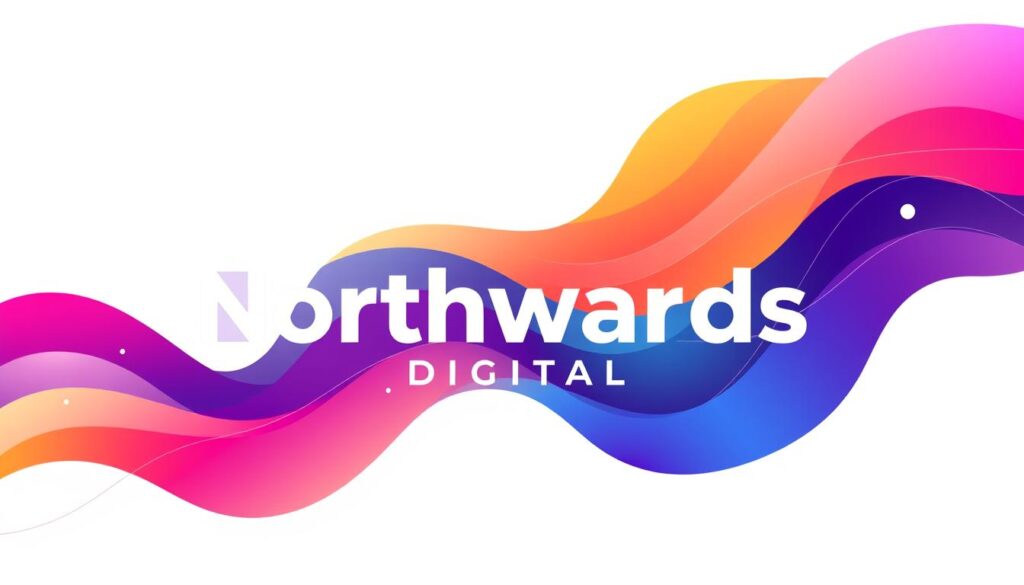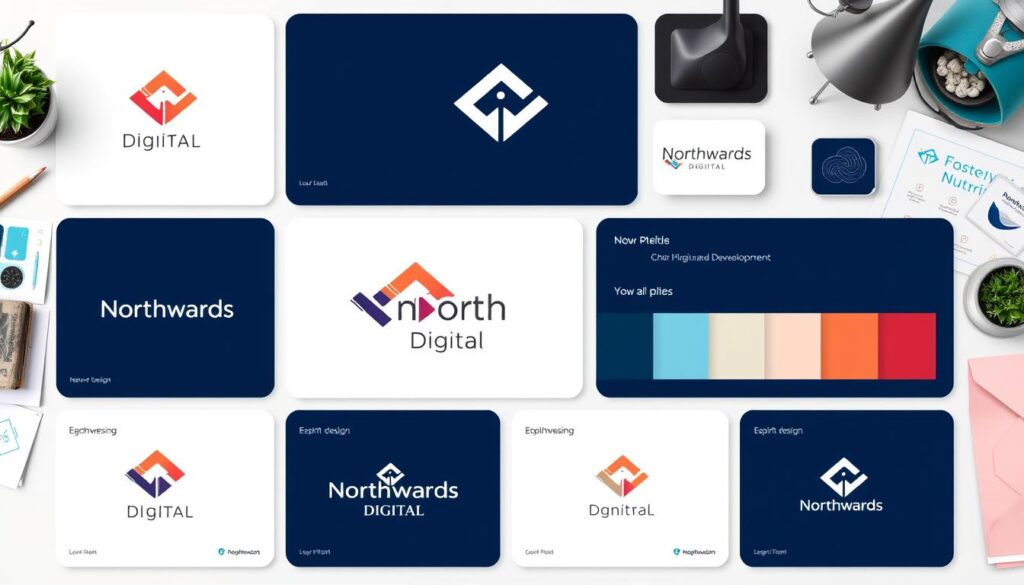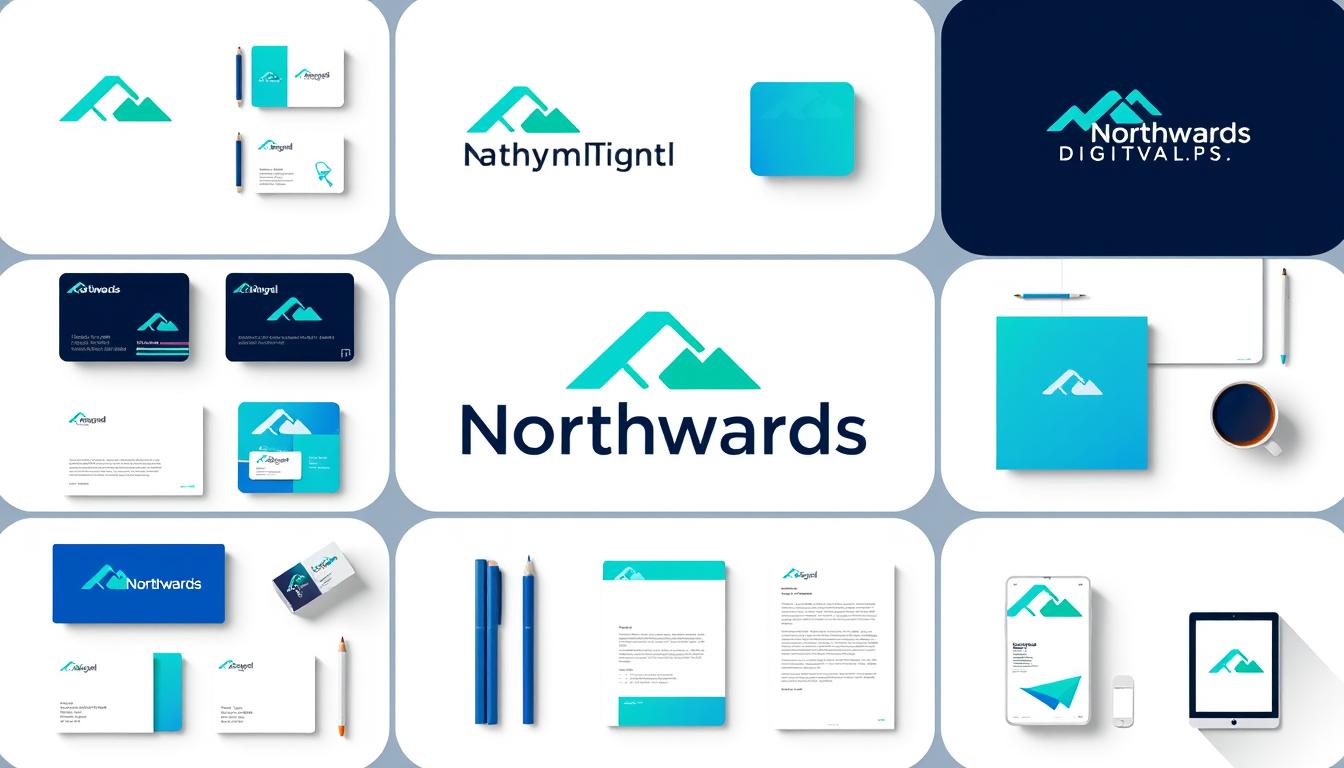Did you know a good brand identity can boost a company’s sales by up to 23%? In today’s market, your brand identity is key. It helps attract and keep your target audience. Learning to design a strong brand identity is vital for success.
This guide will show you how to make a brand identity that stands out. You’ll learn about the basics of brand identity design and how to create a solid brand strategy. You’ll get the tools to make a brand that people remember and connect with.
Key Takeaways
- A well-designed brand identity can increase a company’s revenue by up to 23%.
- Your brand identity is the cornerstone of your business, serving as a powerful tool to attract and engage your target audience.
- Mastering brand identity design is crucial for standing out, communicating your unique value proposition, and forging lasting connections with your customers.
- This guide will equip you with the essential strategies and insights to craft a compelling brand identity design that sets your business apart.
- From understanding the essence of brand identity design to developing a comprehensive brand strategy, you’ll learn how to create a memorable and impactful brand.
Understanding the Essence of Brand Identity Design
Brand identity design shows what your brand looks like. It includes your logo, colours, fonts, and overall look. A good brand identity helps you stand out, share your values, and connect with people.
What is Brand Identity Design?
Brand identity design is key to your brand. It shows your brand’s personality, values, and where you stand. It’s more than a logo. It’s a complete look for your brand, seen everywhere from your website to your products.
The Importance of a Cohesive Brand Identity
A strong brand identity is vital for any business. It makes you different, helps people remember you, and leaves a lasting impression. When your Brand Identity Design, Brand Positioning, Brand Personality, and Brand Voice match, you tell your brand’s story well. This builds a strong bond with your customers.
Investing in a great Brand Identity Design helps in many ways. It makes your brand look better and more memorable. It shows your values and personality to your audience. It also makes your brand look more professional and different from others.
Having a strong Brand Identity Design is key to growing your brand. It builds trust, loyalty, and success over time.
Defining Your Brand Positioning
Creating a clear brand positioning is key to a successful brand identity. It means defining what makes your brand special, who you’re for, and how you want to be seen. This way, your visual identity matches your brand strategy and speaks to your target audience.
To set your brand positioning, think about these important points:
- Unique Value Proposition: What makes your brand different? Find the special benefits, features, or qualities that make your brand valuable to customers.
- Target Audience: Who do you want to reach? Know their needs, likes, and problems to make sure your brand talks to them.
- Competitive Landscape: Look at your competitors and how they brand themselves. Find the gaps in the market your brand can fill and your unique edge.
- Brand Personality: Decide on the personality, values, and tone you want your brand to have. This helps create a consistent and real brand identity.
By defining your brand positioning well, you can craft a strong brand strategy. This strategy will guide your visual identity design and connect with your target audience.
Developing a Brand Strategy
Creating a strong brand strategy is key to your brand’s growth. It starts with market research to understand your industry, rivals, and your target audience.
Conducting Market Research
Market research is the base of a good brand strategy. It lets you see the market’s challenges, trends, and chances. Knowing what your competitors do helps you stand out and offer something special.
Identifying Your Target Audience
Knowing your target audience is vital for a brand strategy. Get their demographic and psychographic details to make buyer personas. This helps you understand their needs and how your brand can meet them.
| Key Considerations for Conducting Market Research | Benefits of Identifying Your Target Audience |
|---|---|
|
|
With deep market research and a clear target audience, you’re ready to craft a brand strategy. This strategy will make your business unique and connect with the right people.
Crafting Your Visual Identity
Your visual identity is key to your brand. It includes your logo, colours, fonts, and images. These elements make your brand stand out and memorable. Let’s look at two important parts: making a memorable logo and picking the right colours.
Designing a Memorable Logo
Your logo is your brand’s face. It shows what your brand is about. Here are some tips for a great logo:
- Make it simple and unique.
- Use elements that show your brand’s heart.
- Try different shapes, fonts, and graphics for a unique look.
- Make sure it looks good in all sizes, from small to big.
Selecting a Colour Palette
The colours you choose are very important. They can make people feel certain ways and show what your brand is like. Think about these things when picking colours:
- Choose colours that match your brand’s personality.
- Make sure the colours go well together.
- Use a main colour and some accent colours for depth.
- Choose colours that are easy to remember and stand out.
With a strong visual identity, you can share your brand’s story and make a big impact.

Brand Identity Design
Brand identity design shows what your brand is all about. It includes everything from your logo to how you talk and feel. It’s all about being consistent and memorable.
Having a strong brand identity is key for any business. It helps you stand out and connect with your audience. By focusing on each part of your brand, you can make a unique and lasting impression.
Key Elements of Brand Identity Design
- Logo Design: Your logo is the heart of your brand. It should be eye-catching and show what your business is all about.
- Colour Palette: Choosing the right colours can make your brand pop. They should match your brand’s personality and message.
- Typography: The fonts you pick can set the mood of your brand. They add to your brand’s look and feel.
- Imagery and Iconography: The pictures and icons you use can show off your brand’s style. They help bring your brand to life.
- Brand Voice and Tone: How you talk and write should match your brand’s identity. It should speak to your audience in a way that feels right.
By carefully designing each part of your brand, you can create a unique and memorable brand. This will help you stand out and connect with your customers in a meaningful way.
Establishing Brand Guidelines
Creating detailed brand guidelines is key for a consistent brand look. These guidelines set rules for using your logo, colours, fonts, and images. Keeping your brand look the same everywhere helps people remember you better and feel closer to your brand.
Maintaining Consistency Across Touchpoints
Being consistent is vital for a strong brand. Your brand guidelines should tell everyone how to use your brand’s look and feel. This includes your website, ads, packaging, and social media. It makes your brand look professional and consistent, which people like.
To keep your brand looking good, your brand guidelines should cover a few things:
- Logo usage: Give clear rules for using your logo, like size and where to put it.
- Colour palette: Pick a few colours and give exact codes for all your brand stuff.
- Typography: Choose fonts and sizes for all your text, from big headlines to small paragraphs.
- Imagery and graphics: Set rules for pictures, illustrations, and icons to keep your brand’s look.
- Tone of voice: Define how your brand talks and feels to make sure it’s the same everywhere.
With good brand guidelines and following them, you can share your brand’s story and values. This helps people feel more connected to your brand.
Building Brand Personality and Voice
Your brand’s personality and voice are key parts of your brand identity design. A unique brand personality can connect with your audience on a deeper level. A consistent brand voice makes your brand relatable and fun for customers.
To create a strong brand personality, think about these points:
- Brand attributes: Find the main traits of your brand, like being new, reliable, or fun.
- Brand archetypes: Match your brand with an archetype, like the Sage or Explorer, for a memorable feel.
- Brand tone: Decide how you sound, whether formal, casual, funny, or inspiring.
Your brand’s voice should be the same everywhere, from your website to social media. Make a set of rules for your brand’s language and tone. This ensures a consistent and familiar experience for your audience.
A strong brand personality and voice can make you stand out. They help you connect with customers on a deeper level. By focusing on these, you can make your brand identity more engaging and memorable.
Creating a Compelling Brand Experience
Your brand identity design should go beyond just looks. It should touch every part of your customer’s journey. From first meeting to ongoing talks, it’s key to deliver on your brand promise. You want to make a seamless, engaging, and memorable brand experience.
Delivering on Your Brand Promise
Aligning your brand’s touchpoints with your identity builds stronger brand loyalty and advocacy. Make sure every interaction, from your website to customer service, backs up your brand promise. This leaves a lasting positive mark.
Engaging with Your Audience
To create a great brand experience, you must engage with your audience. This means making interesting content, hosting events, or chatting on digital channels. Building real connections with customers can make them loyal and brand advocates.

A well-designed brand identity is more than looks. It’s a tool for making a lasting impression and boosting engagement. By keeping your brand promise and creating a unique brand experience, you can stand out. This builds a loyal customer base.
Measuring and Refining Your Brand Identity
It’s important to check and improve your brand identity often. Look at brand identity metrics like how well-known your brand is, what people think of it, and if they stick with it. This helps you spot what needs fixing and make changes.
When you check your brand identity, do surveys, look at website stats, and listen to what customers say. This info helps you tweak your logo, colours, fonts, and more. This keeps your brand fresh and in line with what your audience likes.
By evaluating your brand and tweaking your design, you stay ahead. You can keep up with trends and make your brand more memorable. This way, your brand stays true to itself and connects deeply with your customers.





